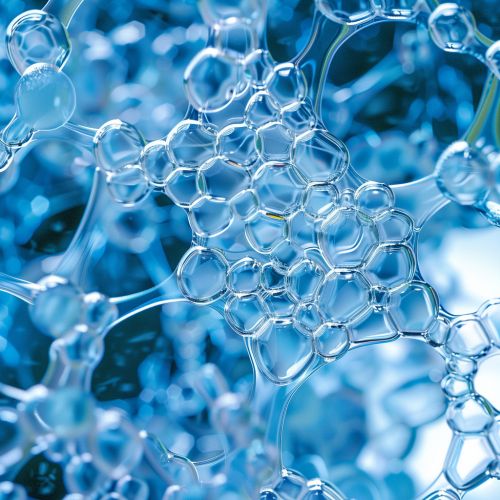Hydrogels
Introduction
Hydrogels are three-dimensional, hydrophilic, polymeric networks capable of absorbing large amounts of water or biological fluids. Due to their high water content, porosity and soft consistency, they closely mimic natural living tissue, more than any other class of synthetic biomaterials. This makes them highly attractive in fields such as biomedical engineering and drug delivery systems.
Structure and Properties
Hydrogels are formed from polymeric materials which are cross-linked through covalent bonds or held together through molecular entanglements or physical cross-links. The cross-linking provides the necessary structural integrity to the hydrogel while the hydrophilic polymer chains facilitate water uptake. The degree of cross-linking not only affects the mechanical properties of the hydrogel but also the degree of swelling and, consequently, the amount of water that can be absorbed.


Types of Hydrogels
There are several types of hydrogels, classified based on the source of the polymer, the type of cross-linking, the physical form of the hydrogel, and the charge of the polymer.
Natural Hydrogels
Natural hydrogels are derived from natural polymers such as alginate, chitosan, and collagen. They are biocompatible and biodegradable, making them suitable for various biomedical applications.
Synthetic Hydrogels
Synthetic hydrogels are made from synthetic polymers such as polyethylene glycol (PEG), polyvinyl alcohol (PVA), and polyacrylamide (PAM). They can be tailored to have specific properties such as mechanical strength, porosity, and degradation rate.
Physically Cross-linked Hydrogels
Physically cross-linked hydrogels are held together by physical interactions such as hydrogen bonding, hydrophobic interactions, or ionic interactions. They are reversible and can be broken and reformed.
Chemically Cross-linked Hydrogels
Chemically cross-linked hydrogels are formed by covalent bonding between the polymer chains. They are more stable and have better mechanical properties than physically cross-linked hydrogels.
Applications
Due to their unique properties, hydrogels have a wide range of applications in various fields.
Biomedical Applications
In the biomedical field, hydrogels are used in drug delivery systems, tissue engineering, and wound dressing. They can be designed to release drugs in a controlled manner, provide a scaffold for cell growth, or absorb wound exudates.
Industrial Applications
In industry, hydrogels are used in agriculture as water-retaining agents, in diapers as absorbent materials, and in contact lenses due to their high water content and softness.
Future Perspectives
With the advancement in polymer science and technology, the design and synthesis of hydrogels with tailored properties for specific applications have become possible. This opens up new possibilities for the use of hydrogels in various fields.
